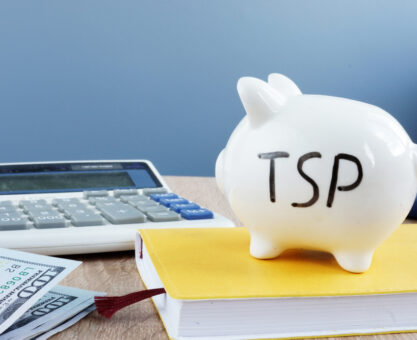Taking out a loan against your Thrift Savings Plan (TSP) balance instead of taking an in-service withdrawal may seem like a good idea. An in-service withdrawal is taxed as income and permanently reduces your TSP balance. If you’re younger than 59-1/2, you’ll also owe a 10% penalty.
None of this applies to a TSP loan. You’re not taxed on the loan amount and the money you borrow is deposited back into your account, with interest, as you repay the loan. However, there are drawbacks you should consider before you make a decision.
“Though this interest is added back into your TSP account as you repay the loan, it’s still less than the interest you could’ve earned by investing that money in a high-performing fund.”
You’re Not Earning Anything On The Amount You Borrow
Let’s say you take out a $20,000 TSP loan then, over the next year, the bull market is up 10%. That means you’ve potentially lost out on as much as a $2,000 in gains. Keep in mind that the TSP loan interest is based on the G-Fund interest rate which usually averages around 2%.
Though this interest is added back into your TSP account as you repay the loan, it’s still less than the interest you could’ve earned by investing that money in a high-performing fund. Overall, when you take out a TSP loan, your nest egg ends up growing at a slower rate.
You’re Paying Back Your TSP With After-Tax Dollars
One of the advantages of a TSP loan is that the amount you borrow is not taxed as income because it’s not considered a TSP withdrawal. Keep in mind, though, when you set up a TSP loan repayment plan, you’ll be using after-tax dollars to pay back the loan and interest. When you think about it – you’ll end up being taxed again on the traditional portion of the loan amount when you take distributions later on in retirement.
The Consequences Of Retiring With A TSP Loan
If you’re closing in on retirement yet still paying off a TSP loan, you have 90 days to pay off the entire loan. If you’re unable to pay it off within this window, the TSP considers the amount you owe as a distribution from your account and you’ll have to pay federal income taxes on the outstanding balance.
The TSP was created as a retirement-savings vehicle and it shouldn’t be used a bank account. That’s why it’s wise to look at other loan options if you can. With that said, in the event of an emergency, with no other options, the ability to take out a TSP loan is yet another advantage of this federal program.














